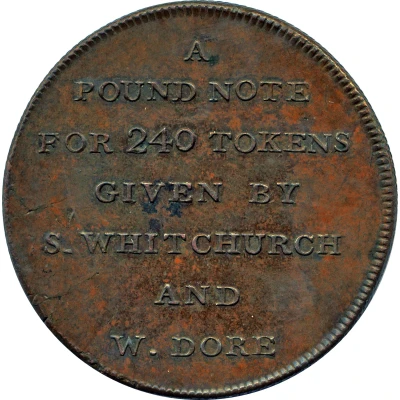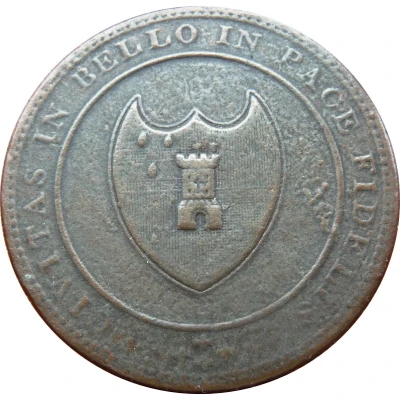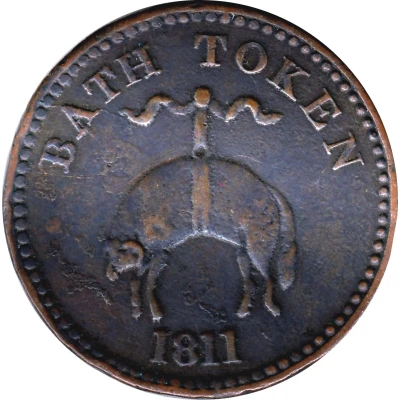


© 4wheels
1 Penny Somerset - Bath / Whitchurch and Dore
1811 year| Copper | 18.4 g | 35.1 mm |
| Issuer | United Kingdom (United Kingdom, British Overseas Territories and Crown Dependencies) |
|---|---|
| Type | Token |
| Year | 1811 |
| Value | 1 Penny (1⁄240) |
| Currency | Currency tokens (1798-1816) |
| Composition | Copper |
| Weight | 18.4 g |
| Diameter | 35.1 mm |
| Thickness | 2.4 mm |
| Shape | Round |
| Technique | Milled |
| Orientation | Medal alignment ↑↑ |
| Demonetized | 1817 |
| Updated | 2024-10-09 |
| Numista | N#89901 |
|---|---|
| Rarity index | 83% |
Reverse
Legend across seven horizontal lines, beaded border
Script: Latin
Lettering:
A
POUND NOTE
FOR 240 TOKENS
GIVEN BY
S. WHITCHURCH
AND
W. DORE
Edge
Diagonal milling ////
Comment
Samuel T. Whitchurch was an ironmonger, smith, brazier, tinman and cutler, while William Dore was a hatter, hosier mercer and draper, both with businesses in Bath.The coat of arms includes two silver strips representing the River Avon and the hot springs. The sword of St. Paul is a link to Bath Abbey. The supporters, a lion and a bear, stand on a bed of acorns, a link to Bladud, the subject of the Legend of Bath. The knight's helmet indicates a municipality and the crown is that of King Edgar.
A variety exists with S. T. Whitchurch instead of S. Whitchurch within the reverse legend. The obverse has a central suspended ram and only BATH TOKEN (no PENNY) 1811 in the legend (Withers#19, Davis#69).
Interesting fact
One interesting fact about the Token 1 Penny (Somerset - Bath / Whitchurch and Dore) 1811 from United Kingdom is that it was issued during a time when there was a severe shortage of official currency in circulation, leading to the use of private token coins like this one as a substitute for official currency.



